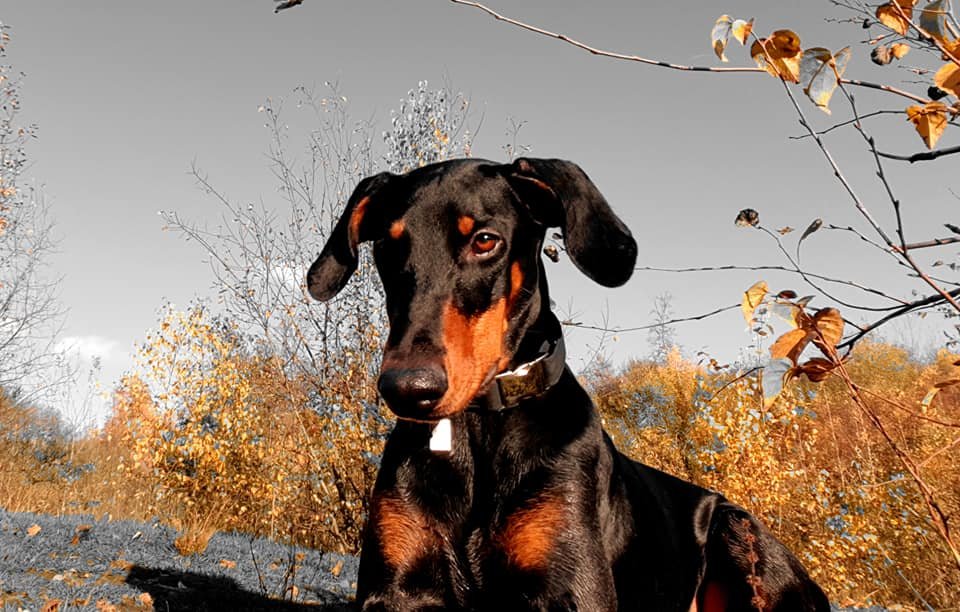The Doberman breed has distinct variations depending on the region, with the American and European Dobermans being the most well-known. These differences arise from the varying breeding goals and standards in the United States and Europe. Here’s a detailed comparison between the American and European Doberman breeds:
1. Appearance
American Doberman
- Build: Generally sleeker and more refined with a more elegant appearance.
- Head: Narrower and more refined head shape.
- Body: Longer body with a more elongated neck and less pronounced chest.
- Ears and Tail: Ears are often cropped and tails docked, following traditional practices, though this is becoming less common due to changing regulations and preferences.
- Size: Typically lighter and slightly smaller compared to their European counterparts.
European Doberman
- Build: More robust and muscular with a sturdier appearance.
- Head: Broader and more substantial head shape.
- Body: Shorter, stockier body with a deeper chest and thicker neck.
- Ears and Tail: Ear cropping and tail docking are also common, though some European countries have banned these practices.
- Size: Generally heavier and slightly larger than American Dobermans.
2. Temperament
American Doberman
- Temperament: Often bred more for companionship and show purposes. They tend to be more laid-back and easier to handle for the average pet owner.
- Energy Level: High energy, but usually more manageable in a household setting.
- Work Drive: Less intense work drive compared to European Dobermans, but still intelligent and trainable.
European Doberman
- Temperament: Bred primarily for work, protection, and performance. They exhibit a higher drive and more intense temperament, making them better suited for working roles.
- Energy Level: Very high energy and need a lot of physical and mental stimulation.
- Work Drive: Strong work drive and a natural protective instinct. They excel in police, military, and protection work.
3. Health and Longevity
American Doberman
- Health: Susceptible to common Doberman health issues such as Dilated Cardiomyopathy (DCM), hip dysplasia, and von Willebrand’s disease.
- Longevity: Generally similar to European Dobermans, but can vary based on individual health and genetics.
European Doberman
- Health: Also prone to common breed health issues, though European breeders often prioritize health testing and genetic diversity to mitigate these risks.
- Longevity: Similar to American Dobermans, with individual lifespans varying based on health and care.
4. Breeding Standards
American Doberman
- Breeding Focus: Emphasis on appearance, conformation, and suitability as family pets and show dogs.
- Standards: Governed by the American Kennel Club (AKC) standards, which focus on the breed’s elegant appearance and overall demeanor.
European Doberman
- Breeding Focus: Emphasis on working ability, temperament, and health. Breeders aim to produce dogs suitable for demanding roles in protection and law enforcement.
- Standards: Governed by the Federation Cynologique Internationale (FCI) standards, which emphasize the breed’s physical robustness, working capability, and correct temperament.
5. Training and Exercise Needs
American Doberman
- Training: Highly trainable and responsive, but may not require as intense training as European Dobermans.
- Exercise: Need regular exercise and mental stimulation, but their energy levels are generally more manageable.
European Doberman
- Training: Require extensive training due to their high drive and intense temperament. They excel in advanced obedience, protection, and performance activities.
- Exercise: Need significant amounts of physical and mental exercise to stay happy and healthy. Ideal for active owners who can commit to rigorous exercise routines.
Conclusion
Both American and European Dobermans have their unique strengths and are suited to different types of owners. American Dobermans are often better suited as family pets and show dogs, with a more relaxed temperament. European Dobermans are ideal for those seeking a working dog with high drive and protective instincts. Understanding these differences can help prospective owners choose the right type of Doberman to match their lifestyle and needs.







You must be logged in to post a comment.